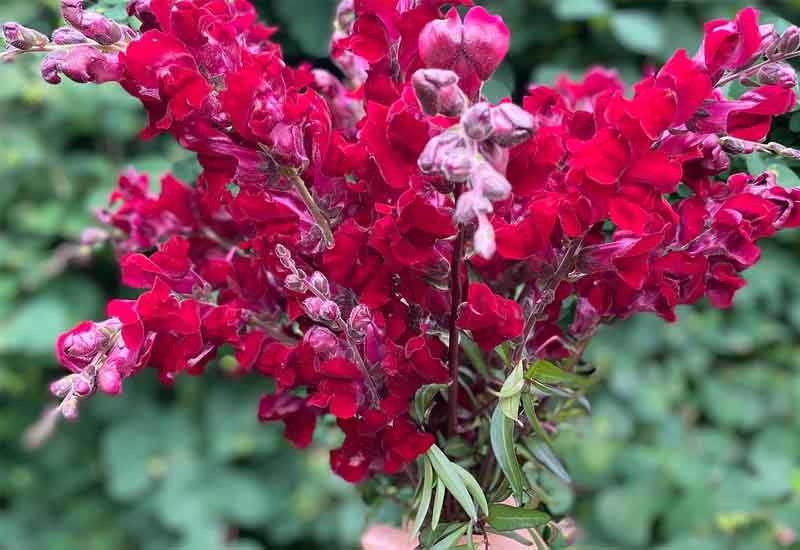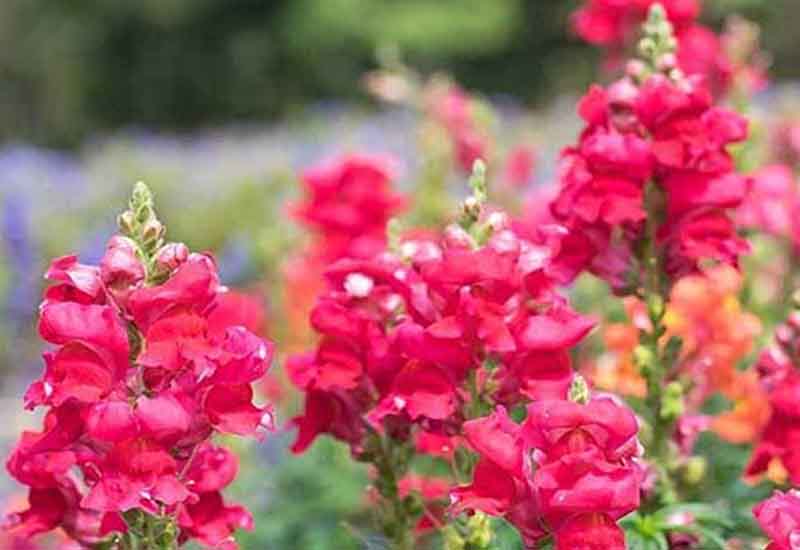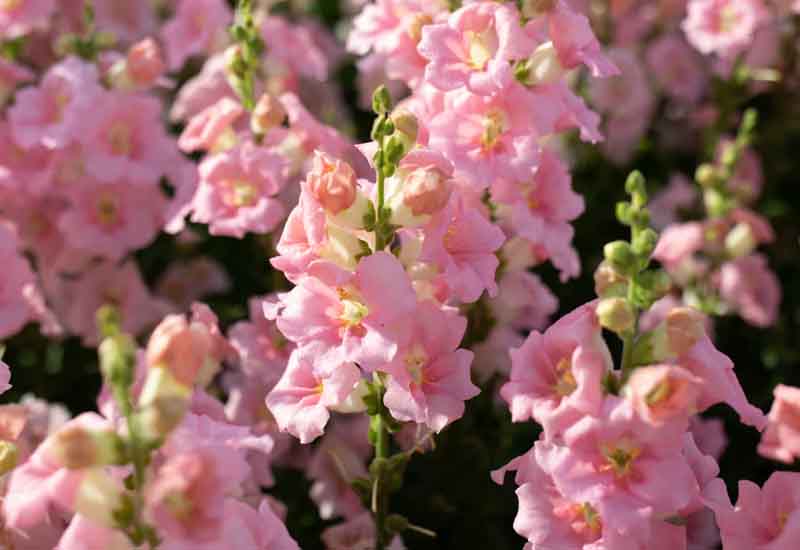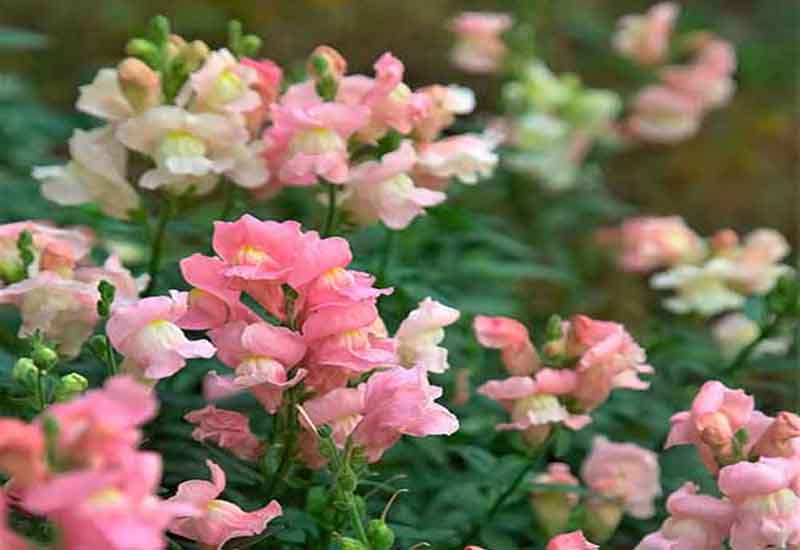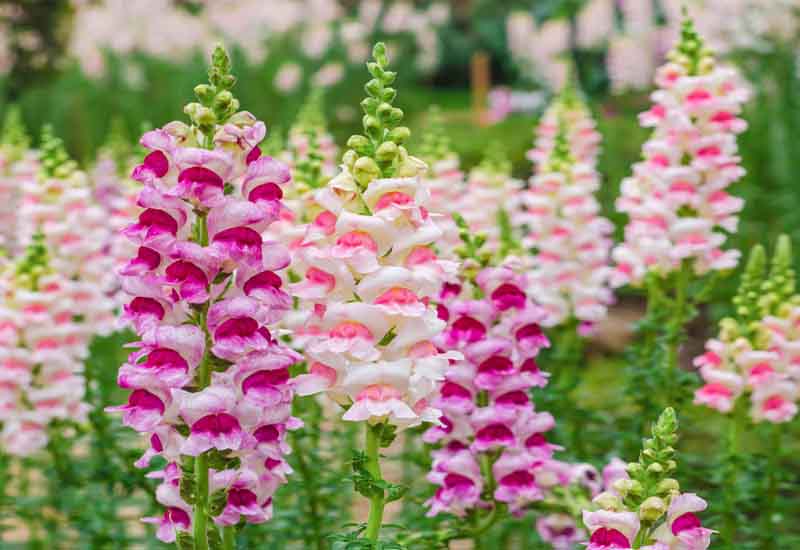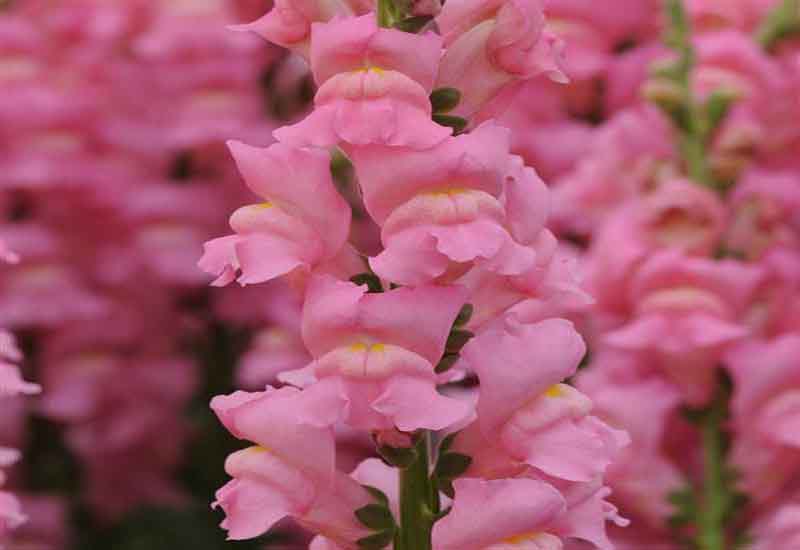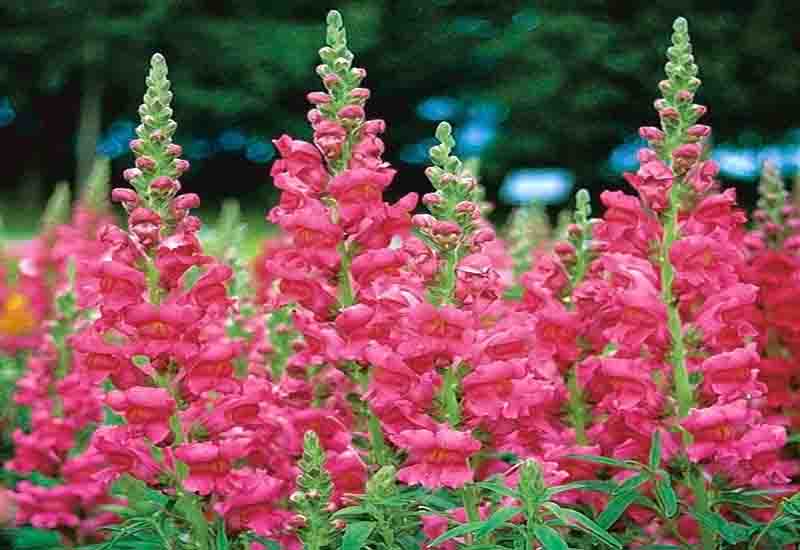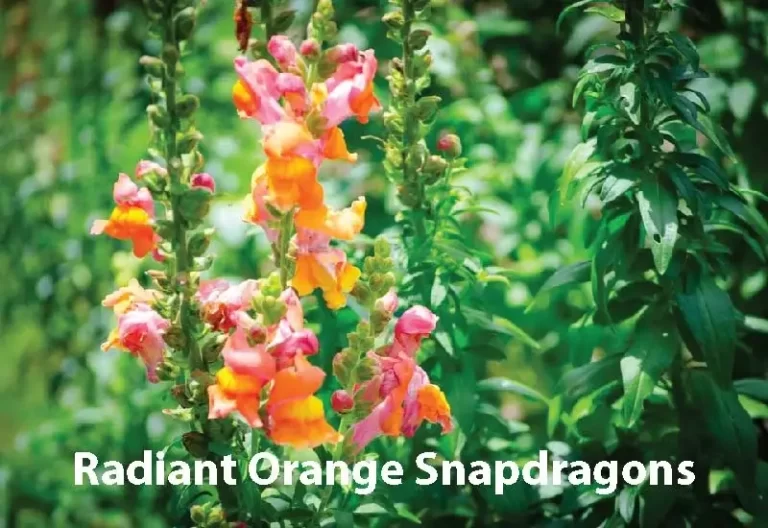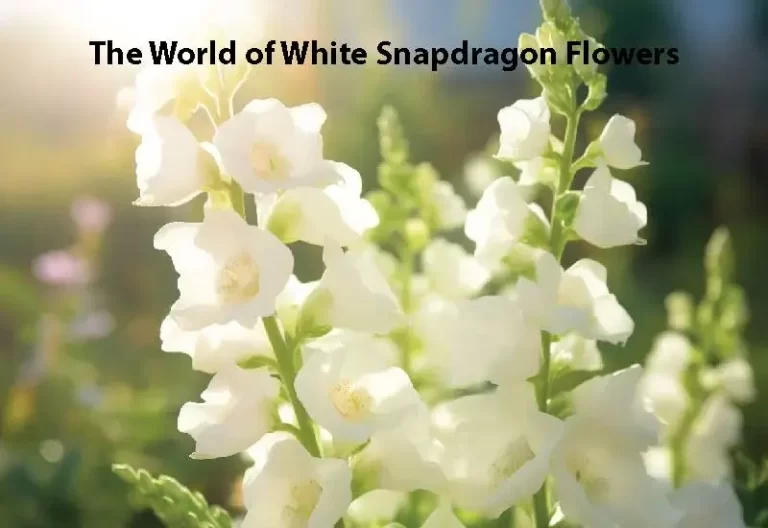Pink Snapdragon Flowers: Nature’s Delicate Beauties
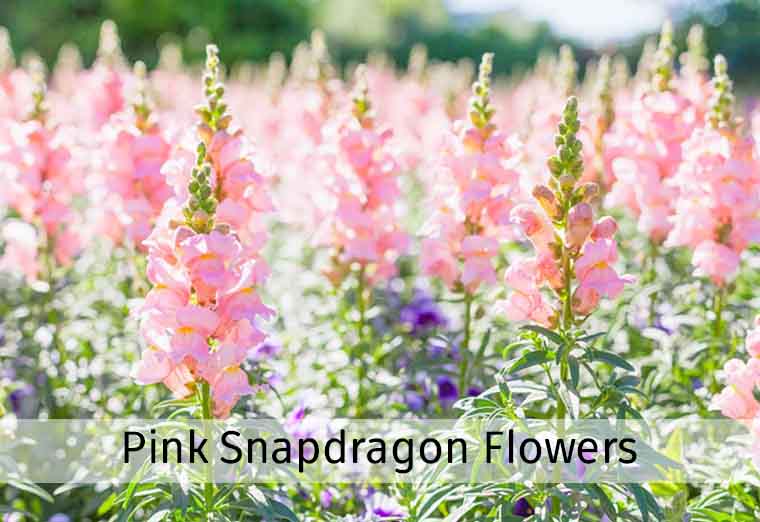
An Introduction to Pink Snapdragons
Pink snapdragon flowers are like little bursts of joy in any garden. Their vibrant hues and unique snap-like appearance make them an attractive choice for both seasoned gardeners and newcomers alike. In this article, we’ll dive into the world of pink snapdragons and explore their fascinating characteristics.
Pink snapdragons can be grown from seeds, and here’s how you can do it
| Purchase Quality Seeds | i) Start by acquiring high-quality snapdragon seeds from a reputable seed supplier or garden centre. Make sure they are fresh and suitable for the specific variety of pink snapdragons you desire. |
| Timing | i) Snapdragon seeds are typically sown indoors 8-10 weeks before the last expected frost date in your region. This allows them to establish before transplanting outdoors. |
| Planting Indoors | i) Fill seed trays or pots with a well-draining seed-starting mix. ii) Sow the snapdragon seeds on the surface of the soil. Do not cover them with additional soil, as they require light to germinate. iii) Water the soil lightly to ensure good seed-to-soil contact. |
| Germination | i) Place the seed trays or pots in a warm location with indirect sunlight. ii) Snapdragons usually take 10-21 days to germinate. Keep the soil consistently moist but not waterlogged. |
| Transplanting | i) Once the seedlings have developed a couple of sets of true leaves and are large enough to handle (usually when they are a few inches tall), you can transplant them into larger pots or directly into your garden. |
| Outdoor Planting | i) Select a sunny to partially shaded location in your garden with well-draining soil. ii) Space the transplants about 6-12 inches apart, depending on the variety. |
| Care | i) Keep the soil consistently moist during the growing season. ii) Apply a balanced, all-purpose fertilizer according to the package instructions. iii) Remove spent flowers (deadheading) to encourage continuous blooming. |
| Overwintering | i) In areas with cold winters, snapdragons may not survive the winter. Consider replanting them as annuals or protecting them from frost. |
Pink Snapdragons: A Splash of Color in the Garden
Imagine your garden painted in various shades of pink. Pink snapdragons can add a delightful pop of color to your outdoor space. Whether you’re looking to create a colorful focal point or simply brighten up your flower beds, these lovely blooms can do wonders. Let’s discover how to make your garden come alive with the beauty of pink snapdragons.
The History and Symbolism of Pink Snapdragons
Pink snapdragons have a rich history and hold symbolism that dates back centuries. Unravel the stories behind these enchanting flowers, from their ancient origins to their modern-day significance. Learn about the emotions and sentiments they represent, making them perfect for special occasions and heartfelt gestures.
Gardening Tips for Pink Snapdragons
To enjoy the full beauty of pink snapdragons, you need to know how to care for them properly. We’ll provide you with essential gardening tips, including soil preparation, watering routines, and sunlight requirements. With the right care, your pink snapdragons will thrive and fill your garden with their stunning blossoms.
Varieties of Pink Snapdragons: Shades and Sizes
Pink snapdragons come in various shades and sizes, allowing you to choose the perfect ones to complement your garden’s aesthetics. From delicate pastel pinks to vibrant, eye-catching hues, we’ll explore the diverse range of pink snapdragon varieties. Discover which ones suit your style and preferences best.
- Admiral
- Aroma
- Black Prince
- Bright Butterflies
- Calima
- Candy Showers
- Chantilly
- Cinderella
- Costa
- Floral Showers
- Frosted Flames
- La Bella
- Liberty
- Little Darling
- Lucky Lips
- Madame Butterfly
- Magic Carpet
- Maximum
- Night and Day
- Potomac
- Rocket
- Sonnet
- Topper
Pink Snapdragons in Floral Arrangements: Design Inspiration
Pink snapdragons can be the stars of your floral arrangements. Discover creative design ideas and tips on how to incorporate these elegant blooms into your bouquets and centerpieces. Let their unique shape and vibrant color elevate your flower arrangements to a whole new level.
Pink Snapdragons and Wildlife: A Natural Attraction
Pink snapdragons not only captivate humans but also attract various wildlife. Learn about the fascinating role these flowers play in supporting local ecosystems. From pollinators like bees and butterflies to other critters, pink snapdragons are a natural magnet for wildlife.
The Language of Flowers: What Pink Snapdragons Convey
In the Victorian era, flowers were used to convey emotions and sentiments. Pink snapdragons are no exception, and they have their own special meanings. Uncover the hidden language of pink snapdragons and find out what emotions and messages these beautiful flowers convey.
Seasonal Blooms: When and Where to Enjoy Pink Snapdragons
Pink snapdragons have their own season of bloom. Learn about the best times to enjoy their vibrant display in gardens and floral markets. Discover how to make the most of their seasonal beauty and where to find them when they’re in full bloom.
Preserving the Beauty: Drying Pink Snapdragons for Decor
If you want to enjoy the charm of pink snapdragons year-round, drying them for decor is a wonderful option. Explore various techniques for preserving the beauty of these flowers, and find out how to use them in dried flower arrangements that add a touch of elegance to your home.
Pink Snapdragons Incomplete Dominance
Incomplete dominance refers to a genetic situation where neither of two alleles (gene variants) is completely dominant over the other, resulting in a blended or intermediate phenotype. In the case of pink snapdragons, incomplete dominance might refer to the genetic makeup that produces pink flowers, as it involves a blending of alleles from parental plants with different flower colors.
What is the Difference Between Incomplete Dominance and Codominance?
Incomplete dominance and codominance are both genetic inheritance patterns where neither allele is completely dominant over the other, but they differ in how the alleles are expressed:
Incomplete Dominance: In incomplete dominance, the heterozygous genotype results in an intermediate phenotype. For example, in snapdragons, when a red-flowered plant (RR) is crossed with a white-flowered plant (WW), the offspring (RW) may have pink flowers, which is an intermediate color between red and white.
Codominance: In codominance, both alleles are fully expressed in the heterozygous genotype. For example, in the case of blood types, if a person inherits an A allele from one parent and a B allele from the other, their blood type will be AB, expressing both A and B antigens.
Pink Snapdragon Genotype
The specific genotype of pink snapdragons would depend on the genetic makeup of the plant in question. For pink flower color in snapdragons, it’s often associated with a heterozygous genotype (RW), where one allele codes for red pigment and the other for white, resulting in the blending of colors to produce pink. However, the actual genetic details can vary based on the specific genes and alleles involved in the particular variety of snapdragon being studied.
Final Words
In the world of gardening, pink snapdragons are treasured for their beauty and versatility. As you delve deeper into the enchanting realm of these delicate flowers, you’ll find that they have much to offer in terms of aesthetics and meaning. Whether you’re a seasoned gardener or just starting out, pink snapdragons are a fantastic addition to any garden, bringing color, history, and symbolism to your outdoor space.
FAQs About Pink Snapdragons
What cross will produce the most pink-colored snapdragons?
The most reliable way to produce the most pink-colored snapdragons is by crossing two snapdragon plants, each with a heterozygous genotype (Rr), where one allele codes for red pigment and the other for white. When these two plants are crossed, their offspring will have a 1:2:1 ratio of genotypes, and approximately 25% of the offspring will have the homozygous recessive genotype (rr), resulting in white flowers, while the remaining 75% will be heterozygous (Rr) and exhibit pink flowers due to incomplete dominance.
What is the genotype of pink-flowered snapdragons?
Pink-flowered snapdragons typically have a heterozygous genotype (Rr), where one allele codes for red pigment (R) and the other for white (r). This heterozygous combination results in the pink flower color due to incomplete dominance.
Are pink snapdragons heterozygous?
Yes, pink snapdragons are typically heterozygous (Rr), meaning they inherit one allele for red flower color and one allele for white flower color. This heterozygosity results in their pink flower coloration due to incomplete dominance.
Could you establish a true breeding variety of pink snapdragons?
Establishing a true breeding variety of pink snapdragons would be challenging because the pink color in snapdragons is a result of incomplete dominance, which means that when pink snapdragons are self-pollinated or cross-pollinated with each other, their offspring will exhibit a range of flower colors, including pink, red, and white. True breeding varieties are typically established for traits that exhibit complete dominance, where offspring consistently express the same trait as the parents. In the case of pink snapdragons, it would be difficult to achieve true breeding for pink color because of the underlying genetics.
What type of dominance occurs in a pink heterozygous snapdragon?
In a pink heterozygous snapdragon (Rr), incomplete dominance occurs. In incomplete dominance, neither allele (R or r) is completely dominant over the other. Instead, they interact to produce an intermediate phenotype, which in this case is the pink flower color. This is in contrast to complete dominance, where one allele masks the expression of the other allele in a heterozygous individual.
Also Read: Copper Gardening Tools



